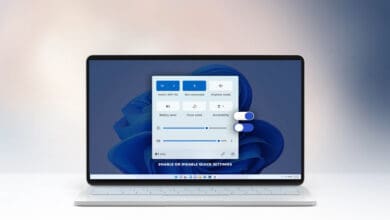
Remove Spyware From Your Android or iPhone: You can protect your digital privacy in a few ways. One way is using virtual private networks (VPNs), which help prevent government agencies, countries, or cyber criminals from accessing your information. Another way is by using end-to-end encryption, which adds an extra layer of security to your messages and data. Lastly, you can use browsers that don’t track your online activity to enhance your privacy. Detecting and removing spyware can be challenging once it’s on a device.
This guide will explain various types of harmful software that can infect your iOS or Android phone. It will also discuss signs of infection and provide instructions on removing these threats from your mobile devices whenever possible. We will also discuss stalkerware and other ways that threats closer to home can spy on you and what you can do to protect yourself.
What is Spyware?
Spyware is a harmful software that secretly infiltrates your Android device to spy on you. If you get spyware on your Android or iOS device, cybercriminals can easily access and steal your username, password, and credit card information. Spyware is intentionally hidden, making it difficult to find. You won’t find a ” Spyware ” app on your app list. Additional signs of infection can help you find spyware on Android and iOS devices.
Spyware is a type of malware that’s dangerous. It sneaks into your device and secretly gets your personal information without you knowing. Malicious spyware is a big problem. It’s hard to find and can take your private information like usernames, passwords, banking details, credit card info, and location information.
- Password stealers
- Keyloggers
- Sound and video recording spyware
- Information stealers
- Cookie trackers
- Banking Trojans
Spyware Examples
Spyware comes in various forms, and it’s helpful to understand the basic differences before addressing the issue.
1. Nuisanceware
Nuisanceware is frequently packaged with genuine apps. Adware can be annoying. It interrupts your web browsing with pop-ups, changes your homepage or search engine settings, and may collect your browsing data to sell to advertising agencies. Although classified as malvertising, it is usually not harmful or a major security risk. Instead, these malware packages aim to make money by infecting computers and generating revenue through forced ad views or clicks.
2. Basic Spyware
There is basic spyware, too. Generic forms of malware can steal essential data from your operating system and clipboard. It includes valuable information like cryptocurrency wallet data and account credentials. Spyware can be used in phishing attacks but is only sometimes targeted. Spyware can infect your device in various ways, such as phishing attempts, harmful email attachments, links on social media, or fake SMS messages.
3. Stalkerware
Advanced spyware, or stalkerware, is a more advanced version of basic spyware. This malware is both unethical and potentially dangerous. While it used to target desktop systems primarily, it is now more commonly found on phones. Spyware and stalkerware can monitor emails, text messages, and phone calls. They can also record sounds and take photos without the user’s knowledge. Additionally, they can track someone’s location using GPS and take control of social media apps like Facebook and WhatsApp. Stalkerware can also have keylogging capabilities. Stalkerware is often used to spy on individuals, monitoring their actions, conversations, and locations. It is often associated with domestic abuse.
4. Pegasus
Now, there is commercial spyware that is as powerful as government-grade software. Pegasus is a widely known case where it was sold to governments as a tool for fighting terrorism and law enforcement. Pegasus was discovered on smartphones owned by journalists, activists, dissidents, and lawyers.
5. Heliconia
In November 2022, Google’s Threat Analysis Group (TAG) shared information about Heliconia, a new spyware framework. It may be connected to a private company in Spain.
What are Spyware infection warning signs?
Here are some signs to look out for that could mean someone is spying on you with spyware or stalkerware.
1. If you’re getting strange messages or emails on social media, it could be a sign of spyware trying to infect your device. To stay safe, delete these items without clicking on any links or downloading any files.
2. SMS messages can also have links that trick you into downloading malware without you knowing.
3. Phishing messages trick you into clicking a harmful link or downloading spyware or stalkerware. If malware is loaded remotely, it will require user interaction. The messages might try to panic you by demanding payment or posing as a failed delivery notice. Spoofed addresses from trusted contacts can be used in messages.
4. Stalkerware uses personalized and targeted initial infection messages.
5. Physical access or accidental installation by the victim is required to install spyware. Some types of spyware and stalkerware can be installed in less than a minute.
6. If you can’t find your phone or it’s been away from you for a while, and when it comes back, it has different settings or changes you don’t recognize, it might mean someone messed with it.
How to detect Spyware on Android or iPhone
1. Your phone’s battery may drain quickly, it might get hot, and you may notice unusual behavior from the operating system or apps. Sometimes, GPS and location functions might turn on themselves or you might experience random reboots. If your data usage suddenly increases, your smartphone is sending out information or remote connections are active. You might struggle to power off your device fully.
2. Some spyware can get permission to affect your bank balance and make fraudulent money. If you notice unauthorized services or premium SMS plans that you didn’t agree to, it might indicate the presence of spyware on your device. Watch your credit cards closely for any unusual charges.
3. Sometimes, harmful software like spyware can get onto your device through an app that initially seemed harmless. Sometimes, developers release a helpful app like a currency converter or weather app in official stores. They attract a lot of users and then unexpectedly change the app’s features.
4. Google removed fake Bluetooth utility apps from the Play Store last year. These apps pretended to be helpful but were harmful. They tricked over a million people into downloading them. The apps seemed harmless at first, but soon users were overwhelmed with ads and pop-ups.
What other signs might I see on Android and iOS devices?
Surveillance software is getting more innovative and challenging to spot. Some spyware and stalkerware can be detected, so you can find out if someone is monitoring you.
Android
A clear indication on an Android device is a setting that lets you download and install apps from sources other than the official Google Play Store. If you have enabled this setting, it could mean someone has tampered with or jailbroken your device without your permission. Not all spyware and stalkerware need a jailbroken device.
You can find this setting in most modern Android builds by going to Settings, then Security, and finally Allow unknown sources. It depends on the device and vendor. To check for unfamiliar apps, go to Apps > Menu > Special Access > Install unknown apps. However, remember that spyware may not always appear on the app list.
Some kinds of spyware can use generic names and icons to evade detection. They might look like helpful apps like a calendar, calculator, or currency converter. If you see a process or app you don’t recognize on the app list, you can quickly search online to check if it’s legitimate.
iPhone
Non-jailbroken iOS devices are usually more secure against malware than Android phones unless a zero-day exploit or unpatched vulnerability is used. However, the same rules for dealing with malware still apply. Your device can be compromised by someone physically accessing it or using the right tool, exploit, or software remotely. If you haven’t updated your iPhone’s firmware and don’t run antivirus scans often, you might be more likely to get infected.
Both iOS and Android phones can show signs of a malware infection.
How can I remove spyware from my device?
Spyware and stalkerware are intentionally difficult to detect and remove. It’s not impossible in most cases, but it may require some drastic actions from you. Sometimes, you may need to give up on your device as a last resort.
When spyware, like stalkerware, is removed, some attackers may receive an alert informing them that the victim’s device has been cleaned up. If your information flow suddenly stops, it’s a clear sign to the attacker that the malicious software has been removed.
Don’t mess with your device if you think your safety is at risk. Instead, contact the police and other supporting agencies. Here are a few options for removal:
1. Run a malware scan
You can find mobile antivirus solutions that detect and remove spyware. This solution is easy, but it may only work for some things. Popular cybersecurity vendors like Malwarebytes, Avast, and Bitdefender provide mobile spyware-scanning tools.
2. Update your operating system
When an operating system releases a new version, it can sometimes cause conflicts and problems with spyware due to security patches and upgrades. Please ensure that this is kept up to date.
3. If all else fails, Factory Reset
To get rid of spyware and stalkerware, try doing a factory reset and clean install on the device you think is compromised. It can help remove these types of malicious software. Before proceeding, it is essential to back up any important content. The reset option on Android platforms is Settings > General Management > Reset > Factory Data Reset. On iOS, go to Settings > General > Transfer or Reset phone.
Stalkerware services can still work even after a factory reset. If everything else fails, you can reset your device to its original factory settings and get rid of it.
If you find suspicious software on your phone, here’s what you should do:
Change your passwords
If your account is compromised, change the passwords for all your important accounts. Most of us have a primary account, like an email address, connected to all our other services. To protect your security, disable access to any hub services you use on a compromised device.
Creating a new email address
If you’re dealing with stalkerware, link your new email to your main accounts for added security. This method can help you regain control of your accounts discreetly and without raising any alarms.
What can I do about about advanced spyware like Pegasus?
Detecting government-grade spyware can be challenging. According to a guide by Kaspersky on Pegasus, there are steps you can take to reduce the risk of being surveilled. These steps are based on current research and findings.
Reboots: Remember to reboot your device every day to avoid persistence issues. Zero-day exploits cause most infections and don’t last long. So, rebooting can make it harder for attackers.
Disable iMessage and FaceTime (iOS): iMessage and FaceTime, enabled by default, can be easily exploited. In recent years, new exploits have been discovered for Safari and iMessage.
Use an alternative browser other than Safari or default Chrome: Exploits may not work effectively on browsers like Firefox Focus.
Use a paid, reputable VPN service and download an application that notifies you when your device has been compromised. Some AV applications will carry out this check.
Additionally, individuals with suspicions of a Pegasus infection should utilize a secondary device for secure communication, preferably equipped with GrapheneOS.
How do I keep spyware and stalkerware off my device in the first place?
No mobile device is fully protected from spyware. Here are some tips to reduce the risk of future infections:
1. Protect your device physically
The first step is to have good physical controls in place. Smartphones today have security features like PIN codes, patterns, and biometrics (like fingerprints or retina scans) to protect them from physical tampering.
Please remember to update your operating system regularly. Install any available system updates promptly. Updates are crucial for protecting against malware as they include security fixes and patches.
2. Use Antivirus software
You can find mobile antivirus solutions that detect and remove spyware. Scanning your phone regularly will keep it safe.
3. Only download apps from official sources
Be careful when downloading apps from websites other than Google Play and Apple’s App Store, as most spyware and malware are found there.
4. Watch out for malicious links
Mobile malware is commonly spread through phishing and malicious links on social media services. Be cautious of these links that might prompt you to download apps from sources other than Google Play or the App Store. They can be disguised as various things like antivirus software or streaming services.
5. Do not jailbreak your device
Jailbreaking can void your warranty and make it easier for malicious apps and software to take control of your operating system. Removing them can be very difficult or even impossible.
6. Enable two-factor authentication (2FA)
Using a mobile device for account activity and logins can provide extra protection for individual accounts. Spyware can intercept codes used in 2FA protocols.
What are Google and Apple doing to protect Android and iOS devices?
Google and Apple quickly address malicious apps that bypass privacy and security measures in their app stores.
A few years back, Google took down seven apps from the Play Store. These apps were advertised as tools for tracking employees and children. The tech giant didn’t like that their functions went too far. These functions included tracking GPS devices, accessing SMS messages, stealing contact lists, and possibly exposing conversations in messaging apps. Google has banned ads for stalkerware as well. However, some apps still manage to slip through unnoticed.
Google’s Threat Analysis Group regularly shares research on new types of spyware and who they might target.
Apple has taken action against parental control apps due to concerns about privacy invasion. The company has a service called Screen Time that helps parents control their child’s device usage. Additionally, the company prohibits sideloading, which means installing apps from sources other than Apple’s App Store.
Apple announced a $10 million grant 2022 to research ways to fight state-sponsored spyware.
Are parental control apps spyware?
Online threats and inappropriate content are everywhere, making it essential for parents to monitor their children’s online activities. Kids may want smartphones and social media accounts, but parents need to ensure they can keep an eye on what their children are seeing and who they are talking to online. Parental control apps are primarily designed for surveillance.
The main problem is the potential for misuse. Parental control apps can be misused and ask for too many invasive permissions, which can affect children’s and adults’ privacy.
Maintaining a balance between privacy and protection is challenging. Apple and Google have added parental controls to Android devices, Chromebooks, iPhones, and iPads. These platforms help limit screen time, control device access, manage permissions, restrict web content and app downloads, and approve purchases.
Final Words
Spyware is harmful software that secretly monitors what you do online. It can gather personal information like login details, location, banking and credit card information, messages, private photos, and browsing history. Hackers usually use this sensitive information to make money. Spyware secretly monitors your device, recording your online activities and sensitive transactions. Spyware on your Android phone can lead to your login credentials and financial information being sent to cybercriminals. Discover how to identify and remove spyware on Android and iOS devices.



